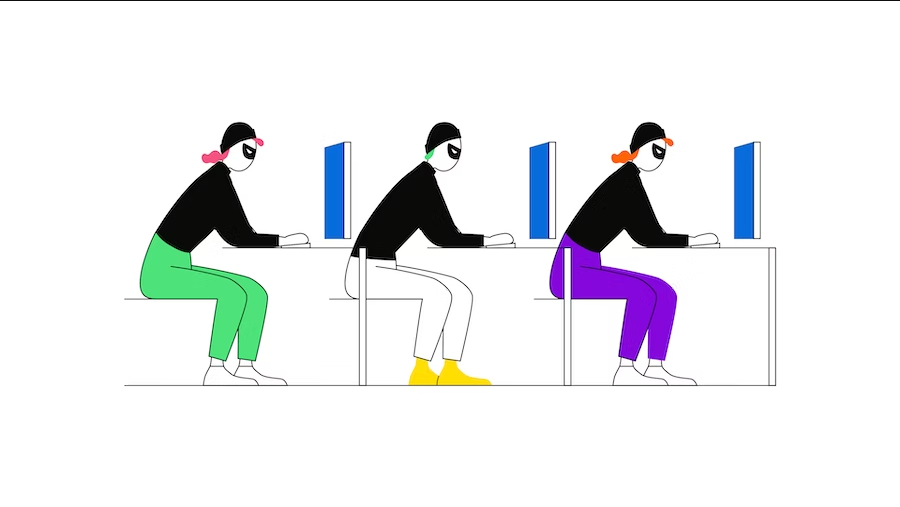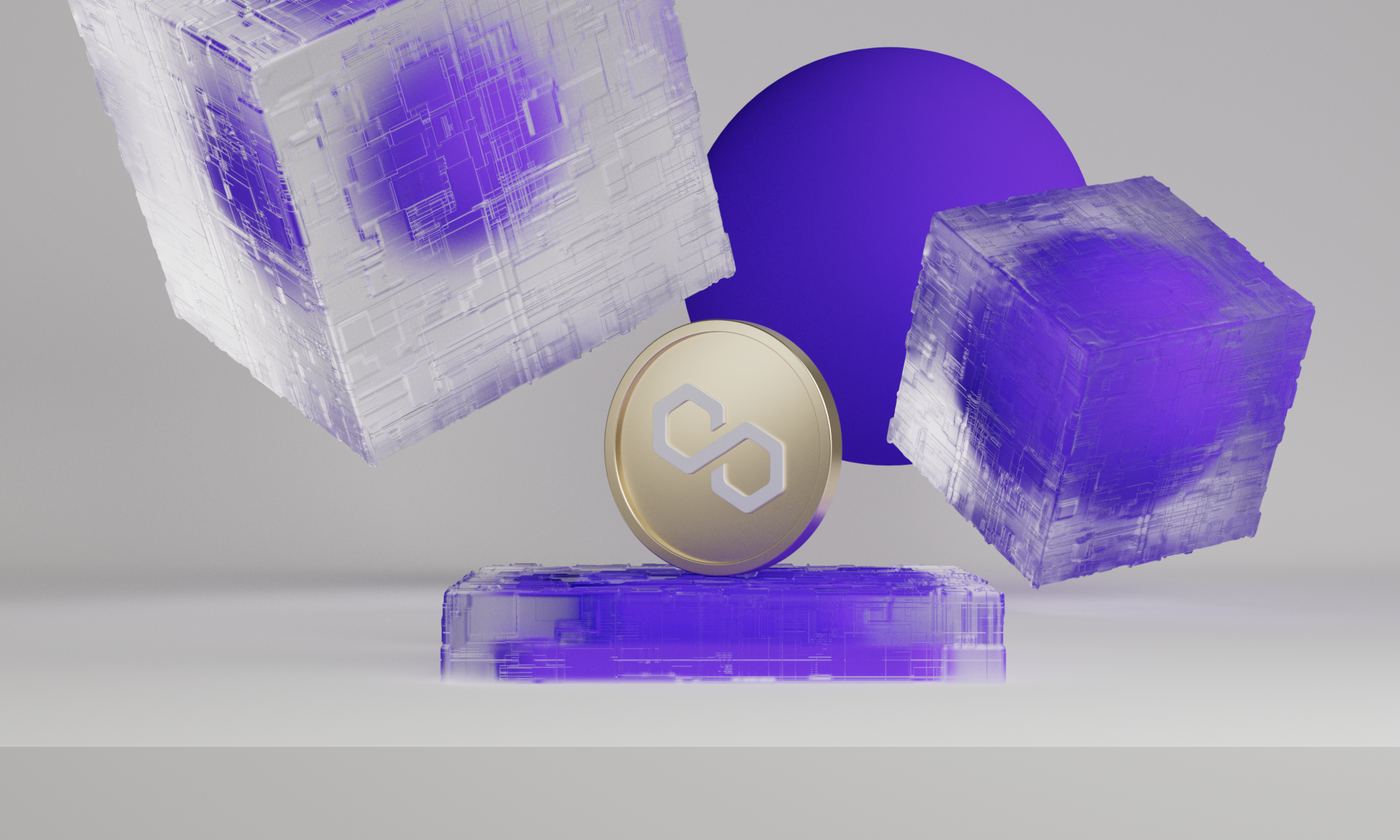Launched in 2017, Polygon is a layer 2 scaling solution that uses a Proof of Stake (PoS) mechanism to offer a cheaper and faster alternative to Ethereum.
Operating on the Ethereum blockchain, Polygon helps other blockchain projects to connect, scale, and increase flexibility while retaining the benefits of the Ethereum ecosystem.
MATIC, the native cryptocurrency of the network, is an ERC-20 token used for governance, network security, staking, and paying transaction fees on the Polygon network.
The MATIC price reached its all-time high on December 27, 2021, at €2.58.
What is Polygon?
Before rebranding under the name it has today, Polygon was known as the Matic network. Founded in 2017 by Jaynti Kanani, Sandeep Nailwal, and Anurag Arjun - who were joined by Mihailo Bjelic in 2020 - Polygon has the ambitious goal of optimising Ethereum for mass adoption. In the words of the project’s official website:
“Polygon is a Layer 2 scaling solution that achieves scale by utilizing sidechains for off-chain computation and a decentralized network of Proof-of-Stake (PoS) validators.”
Let's take a look at an overview of Polygon’s mission and main features.

What are the key features of Polygon?
Polygon consists primarily of three layers:
Polygon smart contracts on Ethereum: A series of Polygon smart contracts are implemented on the Ethereum blockchain. These contracts handle staking for the PoS layer, as well as for delegation and validation shares and can also take snapshots of the sidechain.
Proof of Stake (PoS) layer: Also called Heimdall, this layer is the validator node of the PoS and works in conjunction with the smart contracts that manage staking on the Ethereum blockchain. This layer enables PoS on Polygon.
Block producer layer: Also known as Bor, this layer groups transactions into blocks.
How does Polygon interact with Ethereum?
Congestion issues leading to high fees and low speed are problems that Ethereum has been trying to solve for a long time now. Recently, the Otherside Metaverse land sale sent ETH gas fees up to $5k and even crashed the Ethereum blockchain for a short period.
Imagine Ethereum as a big, crowded and slow road with a very expensive entry fee. What Polygon wants to offer, in the scope of this metaphor, is not a different road, but a parallel, faster one for a lower price that brings you to the same exact destination.
To give you the alternative parallel road mentioned above, Polygon uses a set of tools, including sidechains and bridges.
What are sidechains?
Sidechains are separate blockchains running alongside a “main” chain, like Ethereum or Bitcoin, that typically aim at improving the mainchain in some ways. Sidechains have their own consensus mechanisms to enable block creation and are able to communicate with the mainchain. Communication between sidechains and mainchains are what allow assets like tokens to be transferred from one chain to another and it’s typically made possible by a smart contract created on the mainchain. However, sidechains carry significant risk: if their consensus mechanism fails to keep up the block creation - for instance, if it gets compromised - all the funds on the chain can get lost.
Polygon uses sidechains to improve Ethereum throughput, speed and gas fees. Developers using Polygon can connect Ethereum-compatible blockchain networks, and they can create interoperable Ethereum-compatible blockchains able to communicate both with each other and with the Ethereum mainchain. This communication is made possible by bridges.
What are Polygon bridges?
Polygon has two main bridges that allow for the transfers of assets - including NFTs and tokens - from Polygon sidechains to the Ethereum mainchain and vice versa: the Plasma bridge and the PoS bridge. Both “bridges” consist of a series of smart contracts implemented on the Ethereum blockchain to help with moving digital assets between chains.
Though their goal is the same, the PoS and the Plasma bridge have some peculiar differences.
While the Plasma bridge makes use of the Ethreum’s security systems, the PoS bridge uses - as the name might suggest - a Proof of Stake consensus algorithm powered by external validators.
In terms of time that is required, the PoS bridge enables instant security for deposits, while withdrawals may take up to 3 hours to be confirmed. In the case of the Polygon Plasma bridge the securing processes and measures require more time as there’s a 7-day withdrawal period, due to the Plasma exit mechanism.
Another difference is which tokens are supported for the transfers: the PoS bridge supports ETH, ERC20, ERC721, ERC1155 and other tokens, whereas the Plasma bridge only allows transfers of ETH, ERC20 and ERC721 tokens.
What is the future of Polygon?
Since Polygon works as a layer 2 to Ethereum, many believed that the introduction of Ethereum 2.0 might have seriously threatened the existence and utility of Polygon. However, it’s important to know that even after The Merge, Ethereum continues to depend on layer 2 scaling solutions like Polygon to reduce gas fees and remove blockchain congestion. Also, Ethereum might soon be only one of the blockchains supported by Polygon, as the layer 2 solution may look to support other mainchains in the future.
Also, though it isn’t possible to say with certainty, Vitalik Buterin seems to believe that both layer 1 and layer 2 scaling solutions (such as Polygon) can coexist with Ethereum 2.0.
Deploying blockchains on Polygon
Polygon wants to offer an enhanced and simple user experience to developers and to provide smooth interoperability between blockchains. The protocol wants to allow developers to create and deploy Ethereum-compatible blockchains in a matter of a few clicks - even with just one click for present blockchain networks.
Every blockchain created on Polygon is compatible with all Ethereum tools and can communicate with the Ethereum mainnet and other blockchains to allow for interoperability between chains.
Polygon Edge
Polygon Edge is the framework dedicated to blockchain creation and implementation. Developers can create Ethereum-compatible private or public blockchains, as well as customise and run them via Polygon Edge. According to Polygon’s official website, implementing Polygon Edge results in instant transaction finality and a block time of 2 seconds.
Polygon Edge also powers the Polygon Supernets, a recently launched platform meant to provide developers with an even more secure, decentralised and dedicated infrastructure for creating and launching blockchain networks. Polygon has allocated $100 million to the “development and adoption of Supernets”.
Polygon for scaling DApps
Polygon believes in “Web3 for all” and it sets out to give developers the opportunity to build scalable DApps in a user-friendly and secure platform with low transaction fees. As stated on the official website of the project:
“The Web3 applications built on Polygon offer low fees, high scalability, and hold themselves to highest standard of security”
As of today, more than 19,000 DApps are using Polygon, including SushiSwap (SUSHI), Uniswap (UNI), Curve Finance (CRV) and Aave (AAVE).
Those who are interested in creating or deploying DApps on Polygon might be happy to know that the platform supports many tools used on Ethereum. Smart contract migration on to the Polygon chain is also quite simple since any smart contract can be migrated to Polygon as long as it is totally EVM compatible.
Polygon ID: zkSNARK for ensuring privacy
Polygon has recently launched Polygon ID, a “blockchain-native identity system”. Polygon ID is a zero-knowledge solution to verify one’s identity on the blockchain without needing to share personal information with third parties.
This feature protects the privacy of its users through the use of zkSNARK technology: zkSNARK stands for “Zero-Knowledge Succinct Non-Interactive Argument of Knowledge” and is cryptographic proof held by one party that can confirm information - someone’s identity for instance - to another party without sharing the information itself.
From carbon neutral to carbon negative by 2022
Polygon is already carbon-neutral but recently announced its plan to go carbon negative by 2022. The platform shared its intention to offset carbon emissions by pledging $20 million to projects and initiatives for fighting climate change in its Green Manifesto.
The network will start with a $400,000 purchase of Base Carbon Tonne (BCT) and Moss Carbon Credit (MCO2) carbon credits. The tokens bought by Polygon correspond approximately to 90 thousand tons of CO2 emissions. The platform is partnering with and buying carbon credits from KlimaDAO. KlimaDAO will work on analysing, managing and mitigating Polygon’s carbon footprint. Their ambitious plan is to become carbon negative.
How to buy Polygon?
You can buy MATIC through cryptocurrency exchanges like Bitpanda using fiat currencies, e.g. euros or U.S. dollars. It’s a good idea first to get familiar with the MATIC price history and the current exchange rate. Once purchased, your MATIC investment can be viewed and accessed in a digital wallet similar to a banking app. You then have the option to hold on to your MATIC token or sell it again via the exchange.
What is the Polygon price history?
Like other cryptocurrencies, MATIC is considered a highly volatile asset; its price has fluctuated through many highs and lows throughout its existence, and there’s no way to make a guaranteed MATIC price prediction. As always, it’s important to do your own research before investing in crypto.
Since launching in 2020, there have been notable price developments for Polygon. MATIC reached its all-time high on December 27, 2021, at €2.58, and its all-time low on May 10, 2019 at €0.00280. Its current market capitalisation is €7.44B.
 Commodities* Invest in commodities 24/7
Commodities* Invest in commodities 24/7









